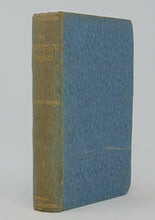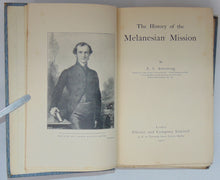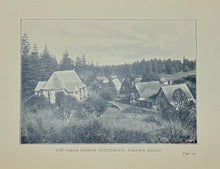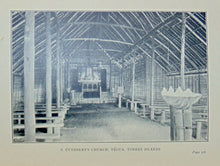
Armstrong, E. S. The History of the Melanesian Mission. London: Isbister and Company Limited, 1900. First Edition. [7427]
Light blue cloth, spine darkened, 9 x 6 inches, scratch to front cover, pinprick size holes from worming along the outside hinges, 1 inch trail of the same on the front paste-down. Red ink name stamp in Chinese characters on ffep. Frontispiece portrait of Bishop Selwyn, xxviii., folding map & additional illustrations. The book is a bit shaken with nothing separated or detached. Good. Hardcover.
"The following history was undertaken at the request of the families of the first three Bishops who stand out in its pages, and whose personality I have striven, however imperfectly, to set forth, feeling strongly that, here if anywhere, personal character and influence have been the corner-stone of the edifice. Mission Reports, biographies, diaries, letters, have all been fully consulted and freely used...Further, for this work I have had the inestimable advantage of personal acquaintance with the four Bishops in succession; of having spent ten years in New Zealand..." - Preface.
"The beginning of the Melanesian Mission dates from 1849, when George Augustus Selwyn, first Bishop of New Zealand, visited the islands...and had five native boys entrusted to him, whom he brought back to train in his school at Auckland. Bishop Selwyn started on the principle of making the natives, after they had been trained by him in Christian truths and baptised and confirmed, missionaries to their own people, with the help and supervision of English missionary clergymen." In 1855 John Coleridge Patteson, a young clergyman, was added to the mission staff, and he was consecrated the first Bishop of Melanesia in 1861. In 1871 Patteson "was killed by a blow from a club, on the little island of Nukapu, Santa Cruz Group...This was an act of revenge, esteemed justice by the natives, for the kidnapping of five native boys by labour-traders, who in those days were practically slave-traders. At the same time a white missionary, the Rev. Joseph Atkin, and a native boy, Stephen Taroaniara, were mortally wounded with arrows, and died afterwards of tetanus." - anglicanhistory online.












